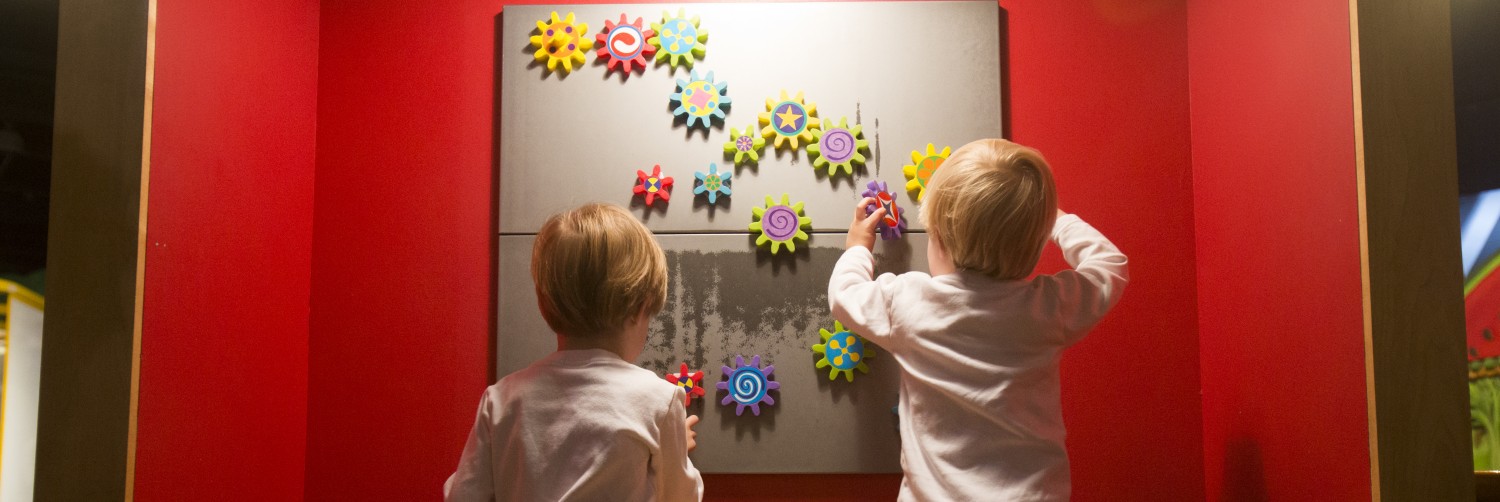Ask a dozen academics why fairy tales have such staying power and resonance and you’re sure to get a dozen different answers. Folk tales go back centuries, and the details shift and change in the telling. As books became available, and later, films were made to adapt the stories, they took on new details, additional characters, and often songs to pad out the running time. But even before the possibilities of print or animation, the tales that we know and love from our childhood had evolved and changed as the stories moved around different cultural groups.
We’re thinking about legends and folk tales a lot this week because we’re so happy to be welcoming back a really popular exhibit, last seen on the Museum floor in 2011, Once Upon a Time…Exploring the World of Fairy Tales. If you missed it the last time around, you’re in for a treat. From an African jungle to a giant’s castle, this unique and educational exhibit focuses on the power and significance of fairy tales throughout history and from around the world. Children will enter an enchanted storybook kingdom where they’ll learn the meaning and history of tales they’ve known all their lives, and others that may be new to them.
The featured tales are “Anansi and the Talking Melon,” “Beauty and the Beast,” “Cinderella,” “Jack and the Beanstalk,” “Lon Po Po,” “The Shoemaker and the Elves,” and “Thumbelina.” Over the next few weeks, we will be exploring the origins of all of these fairy tales, starting with “Jack and the Beanstalk.”
“Jack and the Beanstalk” is correctly called an English folk tale, dating to the early 1800s, but the metaphorical “beans” came from all over Europe before the version of the tale that you might find most familiar took “root.” The concept of climbing some kind of plant life to reach an otherwise impossible-to-access realm in the sky is centuries old. Norse mythology considered a gigantic tree called Yggdrasil whose branches were in heaven, as does Buddhist tradition, where it is described as a Bodhi tree. The Book of Genesis offered the tale of Jacob’s Ladder, which also reached heaven. The “Jack and the Beanstalk” section of the exhibit features a small “beanstalk” for children to climb, which is really quite fun. Don’t worry, parents, the beanstalk doesn’t stretch quite so high that your children will vanish into the clouds!
Germanic folklore is positively packed with giants and ogres, most of whom selfishly guard treasure and need to be outwitted or defeated. That makes them the perfect antagonist for a traditional, clever, and sharp-thinking hero. England in the 15th and 16th Century brought us just such a hero in a bright young commoner, typically called Jack, who appeared in dozens of folk tales. (There’s a “house that Jack built,” for example.) Mix in a little Shakespeare – the giant’s traditional warning cry of “Fee, fi, fo, fum, I smell the blood of an Englishman” comes almost directly from King Lear – and the basic form of the story is pretty typical of 18th Century folklore from the British Isles.

One of the great things about fairy tales is that despite the usual conclusions like “The end” or “And they all lived happily ever after,” they’re still evolving and adapting, with no end in sight. Jack himself has been replaced in dozens and dozens of adaptations over the last seventy years by everybody from Mickey Mouse to Ernie to Nintendo’s Mario to the casts of The Goodies and The Magic School Bus, and they all bring their own spins to the story, making anybody who remembers the version that they heard or saw then retell it differently to their own children. How many trips did Jack make up to the giant’s castle, anyway? Was it just the one, or did he pilfer all the giant’s treasure over the course of a week? Was the giant a lone miser, or did he have a wife who helped Jack bedevil her cruel husband?
And is it really fair to root for Jack, stealing the giant’s gold and ensuring his grisly end? Some adaptations, including a 1952 Abbott & Costello comedy, include some rather important details about Jack and his community’s poverty, blaming the giant for stealing all the area’s gold. On the other end of the spectrum, a 2001 TV miniseries directed by Brian Henson, shown in America on CBS, painted Jack as the villain of the piece, and sent his descendant back to the kingdom of the giants to return the stolen property and atone for the crime.
How will your child interpret the story of “Jack and the Beanstalk”? How will you retell it to him or her at bedtime? We’re sure you will add a detail or two, and your child will tell a slightly different version to his or her own kids down the line as the stories continue to evolve with each new generation.
Once Upon a Time… Exploring the World of Fairy Tales opens this Saturday, May 16, and runs through July 26. We hope that you’ll come and play with us!
For more information about Jack and the Beanstalk and its cultural origins, see:
http://www.surlalunefairytales.com/jackbeanstalk/history.html
https://suite.io/john-k-davis/1wj72tj
http://en.wikipedia.org/wiki/Jack_and_the_Beanstalk














